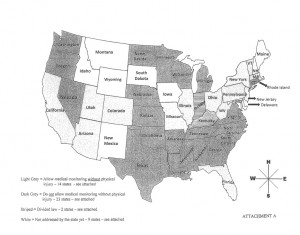Medical monitoring is traditionally a tort remedy that allows plaintiffs exposed to a toxic substance or dangerous product to have the long-term health effects thereof monitored at the defendant’s expense. However, as the remedy is now administered, a plaintiff would have to bring a new case against the defendant if medical monitoring reveals a linkage between the toxin or product and a disease.
Currently, the remedy is accepted in 13 states.
The other states that have considered and rejected the remedy did so based on the theory that recovery in a tort case requires injury from the defendant now, while medical monitoring is inherently based on no detectable present injury. It is submitted that this is a narrow and antiquated approach to tort remedies.
In his article below, Ed Gentle suggests coupling medical monitoring with a defendant payment grid if the plaintiff develops a related illness, in order to better match the remedy to the long-term potential malady. This approach is an exquisite solution to exposure to substances or products with unknown long-term effects, which are frequently encountered in our society and already dominate the civil legal system.
The plaintiff has a form of insurance should he or she get sick, and would not have to bring a new lawsuit. It also solves the problem of a health insurance carrier denying further coverage if an injury results in tort recovery.
From the defendant’s perspective, a grid eliminates the risk of unreasonable tort recoveries and may allow the defendant to quantify and fully pay for the exposure through insurance. We are currently exploring the writing of such a policy.
In conclusion, this dynamic medical monitoring remedy is recommended as the best remedy for harmful substances or products with unknown long-term risks.
Read Ed Gentle’s full article here:

